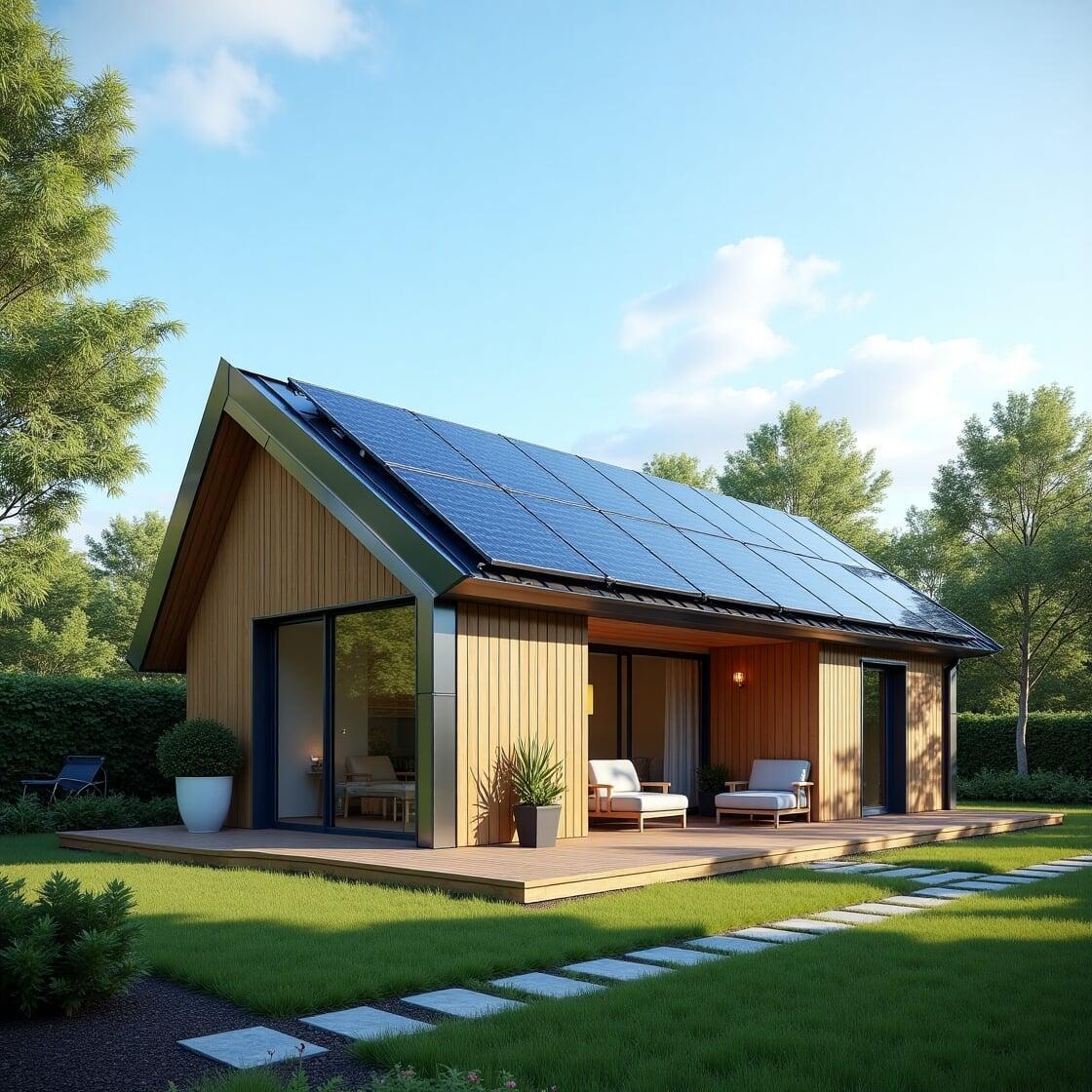As the demand for Accessory Dwelling Units (ADUs) rises across urban and suburban areas, so does the interest in creating environmentally sustainable homes. Whether you're a homeowner building an ADU for personal use or as a rental, incorporating sustainable design into the planning and construction process is not only beneficial for the planet but can also help reduce operating costs and enhance the quality of life for residents.
In this guide, we’ll explore the principles of environmental and sustainable design for ADUs, including practical tips and strategies for creating green, energy-efficient living spaces. From eco-friendly materials to renewable energy solutions, discover how to create an ADU that’s good for both you and the environment.

What is Sustainable Design for ADUs?
Sustainable design refers to creating structures that minimize environmental impact by using eco-friendly materials, energy-efficient systems, and innovative construction methods. In the context of Accessory Dwelling Units (ADUs), sustainable design focuses on:
Reducing energy consumption through efficient insulation, heating, and cooling systems.
Using sustainable materials that are renewable, recyclable, and non-toxic.
Incorporating renewable energy sources such as solar panels, wind energy, or geothermal heating.
Maximizing the use of natural light and ventilation to reduce the need for artificial lighting and climate control.
Ultimately, sustainable design for ADUs aims to create comfortable, healthy living spaces while minimizing environmental impact and reducing utility costs.
Key Principles of Sustainable ADU Design
1. Energy Efficiency
One of the most crucial aspects of sustainable design is making an ADU as energy-efficient as possible. The goal is to reduce the energy demand of the unit while maintaining comfort for the occupants. Here’s how you can achieve that:
Insulation: Proper insulation helps keep the indoor temperature stable, reducing the need for heating or cooling. Insulating walls, floors, and ceilings, as well as using energy-efficient windows, can dramatically lower energy usage.
Energy-efficient HVAC systems: Use high-efficiency heating, ventilation, and air conditioning systems (HVAC) that consume less energy while maintaining comfort.
LED lighting: LED lights use less energy and have a longer lifespan compared to traditional lighting options.
Smart thermostats: Install smart thermostats to regulate temperature efficiently, allowing homeowners to control energy usage remotely.
2. Sustainable Materials
The materials used in constructing an ADU play a significant role in its environmental impact. Opting for sustainable building materials helps reduce the carbon footprint of the project. Consider using:
Recycled materials: Reclaimed wood, recycled steel, and repurposed bricks are excellent choices that reduce the demand for new raw materials.
Bamboo: Bamboo is a fast-growing, renewable resource, making it an eco-friendly alternative to traditional hardwood.
Low-VOC (Volatile Organic Compounds) paints: These paints contain fewer harmful chemicals, improving indoor air quality.
Recycled insulation: Insulation made from recycled denim or cellulose (recycled paper products) is both eco-friendly and effective at reducing energy costs.
3. Water Conservation
Water-efficient design features are key components of a sustainable ADU. The goal is to use water wisely and reduce waste through various strategies:
Low-flow fixtures: Install low-flow faucets, showerheads, and toilets to reduce water usage without sacrificing performance.
Rainwater harvesting: Collecting and storing rainwater can reduce reliance on municipal water systems and provide water for landscaping or flushing toilets.
Native plants and drought-tolerant landscaping: By using plants that are native to your region or resistant to drought, you can significantly reduce water consumption for outdoor spaces.
4. Renewable Energy Solutions
Incorporating renewable energy sources is an effective way to make your ADU more sustainable. Here are a few solutions to consider:
Solar panels: Solar power is one of the most popular renewable energy solutions for ADUs. By installing solar panels, you can generate your own electricity, lowering your reliance on the grid.
Solar water heaters: These systems use the sun’s energy to heat water, reducing energy costs and improving efficiency.
Wind energy: If your location supports it, consider installing a small wind turbine to generate additional renewable energy.
Geothermal heating and cooling: Geothermal systems use the earth’s natural temperature to heat and cool a building, offering energy savings and environmental benefits.
5. Natural Ventilation and Daylighting
Maximizing natural light and airflow is an essential part of sustainable ADU design. Using natural ventilation can help reduce the need for air conditioning and improve indoor air quality. Similarly, daylighting (using natural light for illumination) can minimize the need for electric lighting.
Strategic window placement: Place windows in ways that allow for cross-ventilation, ensuring a continuous flow of fresh air.
Skylights: Skylights bring natural light into spaces that may otherwise rely on artificial lighting, saving energy and creating a pleasant atmosphere.
Shading devices: Use exterior shading, such as awnings or trellises, to reduce heat gain from the sun while allowing natural light to enter the space.
Benefits of Sustainable Design for ADUs
Lower Utility Costs: Energy-efficient features reduce heating, cooling, and water consumption, leading to lower utility bills for both landlords and tenants.
Healthier Living Spaces: Sustainable materials and proper ventilation improve indoor air quality, creating a healthier environment for residents.
Reduced Carbon Footprint: Using renewable energy sources and environmentally friendly building materials helps reduce the overall environmental impact of the ADU.
Increased Property Value: Sustainable homes are becoming increasingly popular, and an ADU with eco-friendly features can attract environmentally conscious buyers or tenants, increasing its market value.
Compliance with Local Regulations: Many cities are implementing green building codes or offering incentives for sustainable construction, so building an eco-friendly ADU can help you stay ahead of future regulations.

